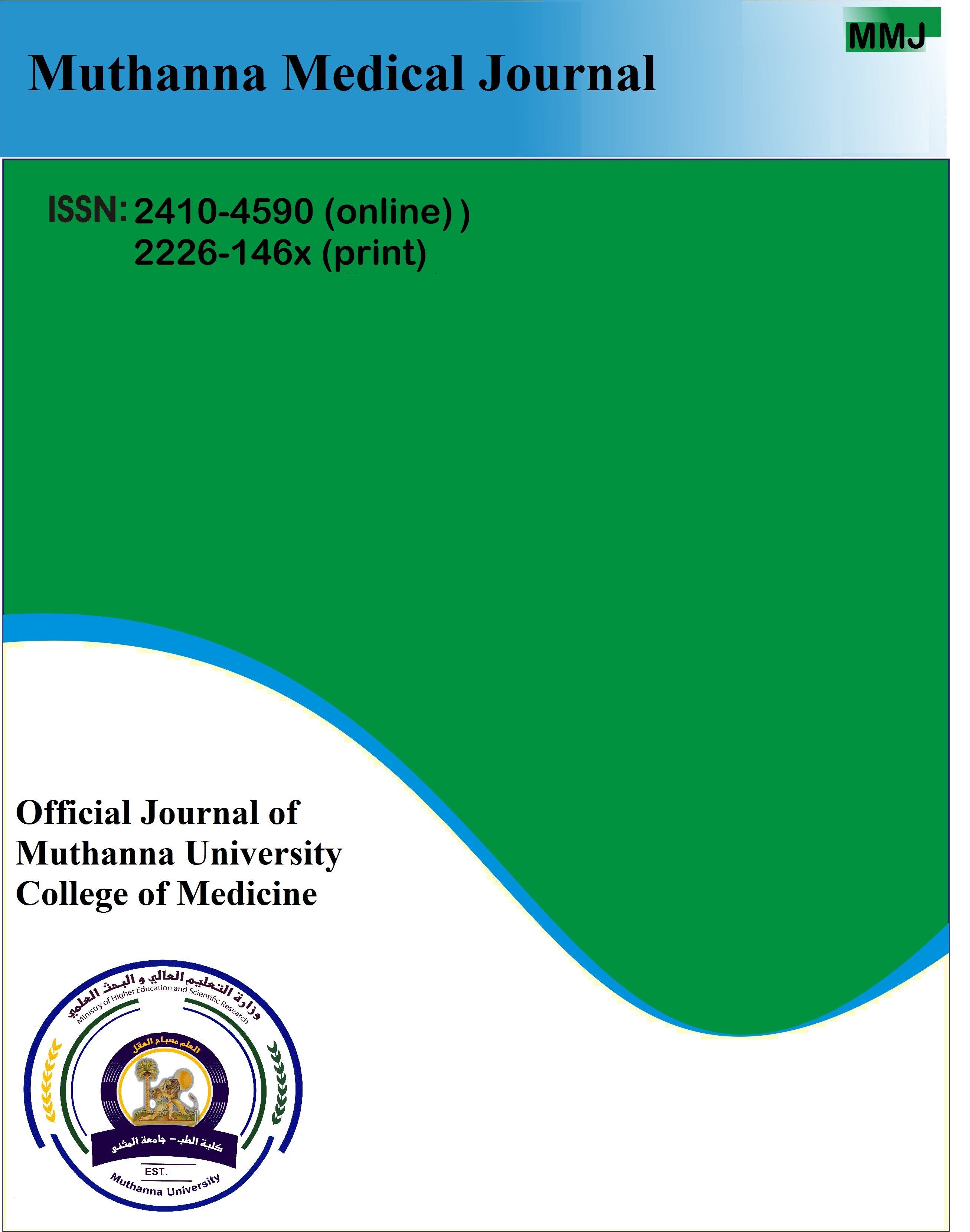Muthanna Medical Journal
Volume 9, Issue 2, 2022 Page 111-120
http://dx.doi.org/10.52113/1/1/2022-111-120
Akram Kdiar Abbas Altmimi ¹*, Ahmed Farhan Abusuda ², Maitham Qasim Mohammed ², Muataz Fawzi Hussein ³
Correspondence author: Aboahmadaltmimi@gmail.com
¹ Al-Batool Teaching Hospital, Diala
² Ibn Alnafees Center for Cardiac Surgery
³ Baghdad Teaching Hospital, Baghdad
Received 30 July 2022, Accepted 10 September 2022, Available online 29 September 2022.
Copyright © 2022 AA. This is article distributed under the terms of the Creative Commons Attribution License http://creativecommons.org/licenses/by/4.0), which permits unrestricted use, distribution, and reproduction in any medium, provided the original work is properly cited.
Abstract
Accurate evaluation of ventricular septal defects types (locations) and measurement of the size of ventricular septal defects and distance from ventricular septal defects to aortic valve are essential for successful trans catheter device closure. The aim of study to assess in patient with ventricular septal defects the accuracy of transthoracic echocardiography in determining the size, position (type), and the distance from ventricular septal defects to the aortic valve as compared to trans- catheter approaches. Cross sectional study included patients with a diagnosis of ventricular septal defects with specific criteria suitable for treatment with transcatheter device closure. Eligibility was confirmed during this study and subject demographic (age, sex), growth parameters (height, weight, body surface, and body mass index) were extracted. During study period, patients underwent catheterization for device closure. Prior to catheterization two- dimensional echocardiography evaluation of VSD was done then left ventriculography was performed by interventional pediatric cardiologist to accurately determine the ventricular septal defects location (type), size and the distance from ventricular septal defects to the aortic valve. Sixty-three patients with in ventricular septal defects. The sensitivity of transthoracic echocardiography in detection the types ventricular septal defects of compared to catheter- based assessment (left ventriculography) was (100%) for all types of ventricular septal defects. The correlation coefficient sensitivity of assessment of ventricular septal defects size by transthoracic echocardiography compared to catheter-based assessment was (97%) p-value (0.001*). The correlation coefficient sensitivity of distance of ventricular septal defects to the aortic valve measured by transthoracic echocardiography compared to catheter based measurement was (91 %) p-value (0.001*). Conclusion: Transthoracic echocardiography is useful to evaluate VSDs location and useful to assess measurements of ventricular septal defects prior to transcathetered occlusion. Irregularity of ventricular septal defects shape and its changes during cardiac cycles are sub-optimally estimated by trasthoracic echocardiography.
Keywords: Comparative study, Transthoracic Echocardiography, Left ventriculography, Ventricular Septal Defect, Device Closure